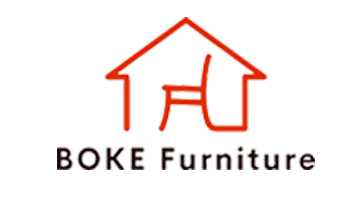1. Introduction: Why Office Furniture Materials Matter
When choosing office furniture, materials matter just as much as design. The right material impacts not only the look and feel of the space but also the durability, cost, and functionality of the furniture. Whether you’re furnishing a corporate workspace, coworking hub, or home office, understanding material types will help you make smarter purchasing decisions.
2. MDF (Medium Density Fiberboard)

MDF is a popular engineered wood made from compressed wood fibers and resin. It offers a smooth surface ideal for paint and veneers, making it a cost-effective alternative to solid wood.
Pros:
- Affordable and easy to shape
- Smooth and uniform surface
Cons:
- Not water-resistant
- Lower weight-bearing capacity compared to plywood
Best Used For:
- Office desks
- Bookshelves
- Storage partitions
3. Steel / Metal
Steel and other metals are commonly used in office furniture for structural support and modern aesthetics.

Pros:
- Extremely strong and durable
- Modern industrial look
- Good for heavy-duty use
Cons:
- Can be heavy
- May rust if not properly treated
Surface Treatments:
- Powder coating
- Chrome plating
- Stainless steel finish
Best Used For:
- Desk frames
- Filing cabinets
- Meeting table legs
4. PU Leather
PU (polyurethane) leather is a synthetic material designed to mimic real leather. It’s often used in office chairs due to its sleek appearance and low cost.

Pros:
- Affordable alternative to genuine leather
- Easy to clean
Cons:
- Less breathable
- Shorter lifespan than real leather
Best Used For:
- Executive chairs
- Visitor chairs
- Meeting room seating
5. Fabric Upholstery
Fabric offers comfort and a wide range of colors and textures. It’s typically used in employee chairs and lounge areas.

Pros:
- Breathable and soft
- Wide variety of styles and colors
Cons:
- Harder to clean
- Stains and wears more easily
Best Used For:
- Task chairs
- Lounge seating
- Reception sofas
6. Glass & Acrylic
Glass and acrylic components bring a modern and open feel to office spaces.

Glass Pros:
- Elegant and high-end appearance
- Easy to clean
Glass Cons:
- Fragile
- Heavy
Acrylic Pros:
- Lightweight and shatter-resistant
- Modern look
Acrylic Cons:
- Easily scratched
Best Used For:
- Conference tables
- Desktop surfaces
- Partition panels
7. Solid Wood & Veneer
Solid wood provides premium aesthetics and durability, while veneer offers the same look at a lower cost.

Solid Wood Pros:
- High-end, timeless look
- Long lifespan
Veneer Pros:
- Cost-effective
- Easier to maintain than solid wood
Best Used For:
- Executive desks
- Credenzas
- Premium storage cabinets
8. Plastic & Polypropylene
These lightweight materials are used for accessories and economical seating.

Pros:
- Cost-effective
- Easy to clean
- Lightweight
Cons:
- Less durable
- Basic appearance
Best Used For:
- Stackable chairs
- Training room seating
- Plastic drawer units
9. How to Choose the Right Material for Your Office Furniture
Material selection should align with your space’s usage, design goals, and maintenance expectations. For example:
- Use MDF for cost-saving workstations
- Opt for metal in shared or high-traffic spaces
- Choose PU or fabric upholstery depending on formality and comfort needs
- Reserve solid wood or veneer for executive areas
Always balance aesthetics, durability, and budget to select the most practical material mix.
10. Conclusion: BOKE Furniture Material Expertise
At BOKE Furniture, we offer office furniture solutions in a wide range of materials to meet your project requirements. Whether you’re designing modern workstations, boardrooms, or lounge areas, our team can recommend the right material combinations for durability, style, and value.
Contact us today to learn more about material options or request a custom quotation.
